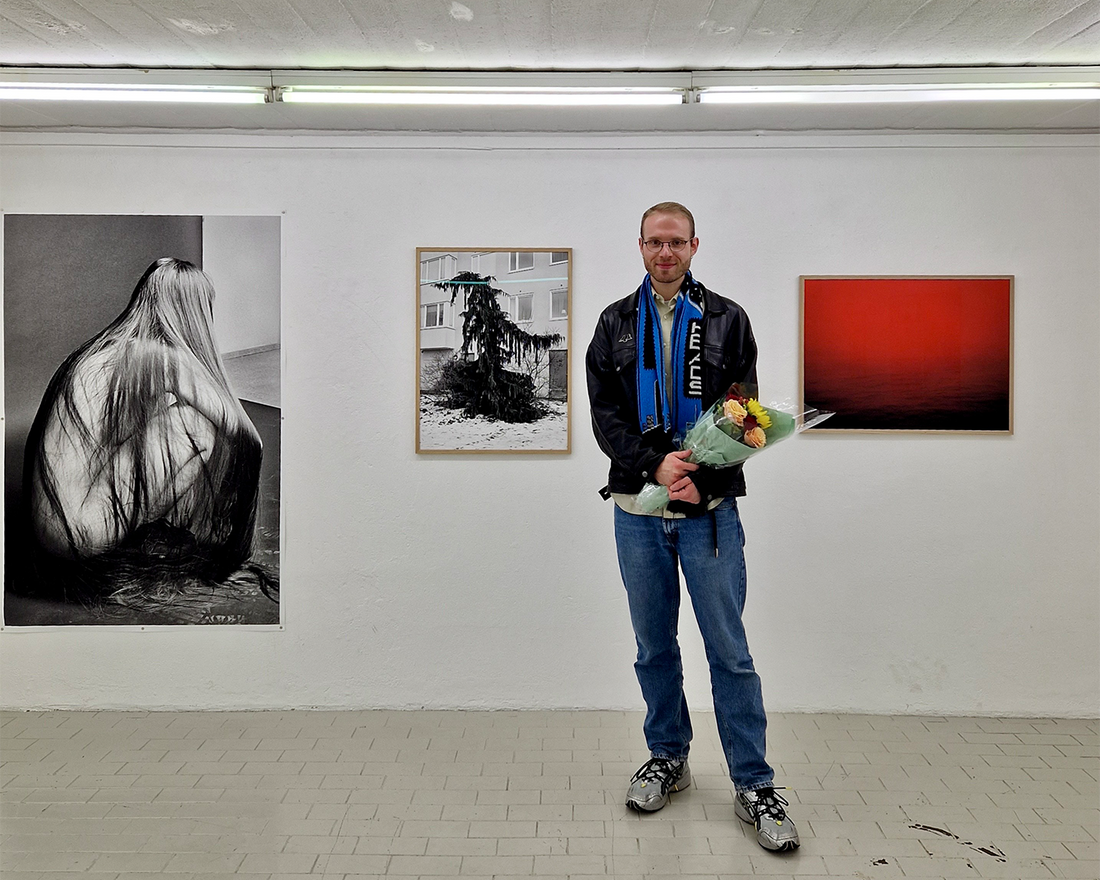MARCUS REISTAD
Tell us more about your background and what inspired you to become an artist and photographer.
I did not come from an artistic family and the years after high school were kind of directionless. High school was a struggle for me and so was my first attempt at college. I was working different unskilled labour jobs for a number of years before I was diagnosed with ADHD in my early mid-twenties. That helped explain why school was challenging for me. At the same time I got a camera and started photographing as a form of diary, as well as documenting the punk scene I was a part of. This inspired me to enroll into a photography program in Oslo. It was there that I was introduced to the history of photography, learned how to work in the darkroom, and became very interested in printmaking. The physicality of the photography process, not just an image on screen, is very important to me. That is why the analogue process, where I work directly with film, resonates with me. This helped me find a creative outlet for my restlessness.
Your work explores a broad range of themes, in a variety of mediums, and with very different creative outcomes. What is the common thread in all of your work and how do you tie it all together?
In my photography, I think it’s often about photography in itself. Since post-modernism, photography as an art form has become very self-referencing. At the same time I am concerned with what I think are core themes rooted in the materiality of photography: emotion, time and space. I have also been for a long time concerned with a sense of belonging, and ways of presenting the landscape as a genre. Either as a physical, psychological, or metaphorical landscape. These central themes also apply to my work as a filmmaker. Working with video and sound has been a helpful in breaking the monotony of solitary practice often associated with photography.
The images in your Dithering series deal with marine pollution. Tell us more about the idea behind this series and the specific process involved to create them.
When I first moved to Gothenburg for my studies at the Art Academy, I wanted to swim in the ocean, as I used to in Oslo during hot summers. However, I quickly discovered that this was not possible due to petroleum pollution resulting from the industrial area Ringön. During the same time, I was taking a course on environmental photography, which has a very specific language and great and epic landscape photographs of a ravaged earth. Having always been interested in the subject matter, but aiming for a different approach, I used a 4x5 camera and color film to photograph a simple seascape of the industrial harbor. While there, I also collected samples of the polluted salt water and, in the photo lab, poured it over the film in a light-sealed container before it was developed. This way the images on the film interacted directly with the polluted salt water resulting in metaphoric and abstract seascapes.
Your series Xerography was a direct result of the pandemic-related lockdown. Did this period forever change how you work?
The pandemic, and being in lockdown, definitely slowed my work pace. But this period also allowed me to re-examen my work process and I’m now more meticulous with how I develop my projects. Not having access to a lab to create new work, forced me to work with what was available, which was primarily my archive of images. With “Xerography” I printed photocopies of my work and then made high-resolution scans which rendered the grainy analog images with a digital noise layer, resembling early digital video camera. Working with this layered tactility became a way to re-contextualize my archives. My old photographs now seemed scintillating with possibility.
How would you describe your work?
As my work encompasses such a wide range of approaches, it is difficult to describe it in a few words. But the lockdown made it apparent to me that the images I make revolves around the same trajectory: Trying to make sense of my surroundings. Time is always presiding in the photographic medium, something I don’t necessarily focus on, but can’t ignore either. The importance of building narratives and social engagement is front and center in my work, and the space where documentary and staged photography becomes blurred is very much of interest to me. Not creating fiction, but making worlds.




